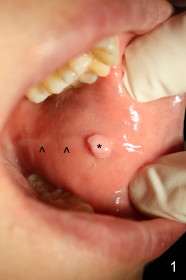
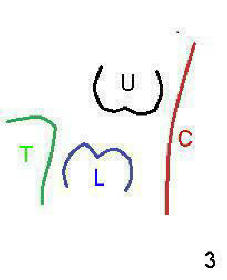
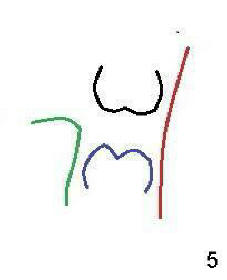
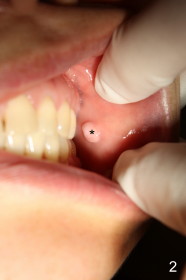
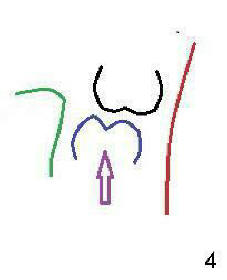
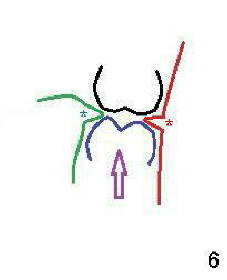
 |
 |
 |
 |
 |
 |
Dental Education Lecture: Bite and Cheek Tumor
Mrs. Jin has had a cheek tumor for about a year (Fig.1,2: *). It has no pain, but it may be bitten, with pain, when she eats or drinks. It is closely related to the back teeth (Fig.2). In fact, the tumor may happen anywhere along the bite line (Fig.1: arrowheads). Both the bite line and tumor is a form of callus, caused by being bitten over a long time. The tumor is benign, but it is bothersome. It should be removed.
Cheek tumor has something to do with our bite. The back teeth also have a certain amount of overbite and overjet. The upper back tooth (Fig.3: U) is normally outside the lower one (L). The upper tooth pushes the cheek (C) outside, whereas the lower tooth pushes the tongue (T) inside. When we chew (Fig.4: arrow), either the cheek or the tongue is not easily trapped and bitten by the opposing teeth.
If the overlapping of the upper and lower back teeth is reduced (Fig.5, similar to Fig.2), the cheek and the tongue are in equal distance to these teeth, as compared to Fig.3. When we bite down a little too quick (like a hungry tiger), the cheek and tongue may be bitten (Fig.6: *) with pain or not. Over the time, cheek tumor is forming. If you are a heavy smoker and/or drinker, thee is possibility for the cheek tumor to become malignant one.
Six months after simple surgery, the wound heals without trace.
Xin Wei, DDS, PhD, MS 1st edition 05/11/2011, last revision 11/02/2011